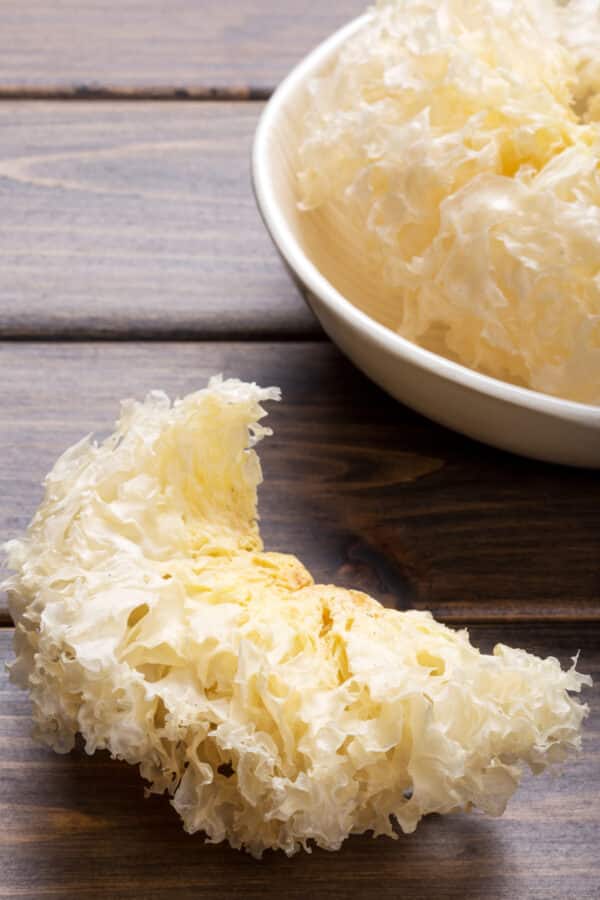Botanical hyaluronic acid

We all know hyaluronic acid by now. It is found in countless cosmetic products because it can store enormous amounts of moisture and thus contributes to firmer and more youthful skin. When we talk about this hyaluronic acid, we are now mostly talking about a synthetically produced substance. It is much purer than former hyaluronic acid, which until a few years ago was extracted from animal tissue such as cows’ eyes and cocks’ combs. This often contained residues of animal protein, which in turn could trigger allergies. Artificially produced hyaluronic acid is therefore a thoroughly reliable cosmetic active ingredient. The manufacturing process is even suitable for certified natural cosmetics. Nevertheless, there is now an alternative: botanical hyaluronic acid. The following article explains what it is made from and what it does.
What is botanical hyaluronic acid?
Sugar compounds (polysaccharides) that are able to absorb and store a lot of moisture are called botanical hyaluronic acid. This can plump up the skin from the inside. It also forms a film that protects the skin from moisture loss. Botanical hyaluronic acid is often extracted from Tremella fuciformis, the Chinese trembling mushroom. More often, however, Indian senna (Cassia angustifolia or Senna alexandrina) is the source of plant-based hyaluronic acid. The extraction is comparatively simple because the hyaluron molecules can be extracted directly from the seeds of the plant. Afterwards, only glycerine or water is added. Cassia angustifolia has been known as a remedy for a very long time. The plant belongs to the carob family and can grow one to three metres high. It grows in Africa, India and Pakistan, but is now also found in Central and South America. As early as the ninth century, senna was a valuable commodity. Its main trading centre was in Alexandria (Egypt): hence the Latin name Senna alexandrina. Even the Prophet Mohammed advised the use of senna leaves. They could be used to cure almost all diseases. Today, doctors in the western world know that senna has an excellent laxative effect. Its leaves have a particularly strong effect, whereas the fruits have a somewhat milder effect. Senna has been studied many times as a herbal laxative. It has also been found to be very well tolerated. Side effects are almost non-existent. The substances responsible for the laxative effect are called sennasoids. The plant can also help against bacterial infections and various skin diseases such as psoriasis, acne, and poorly healing wounds. In Indian folk medicine, it is mainly administered as a tea. But how can senna function as a botanical hyaluronic acid?
Senna as herbal hyaluronic acid in cosmetics
The seeds of the plant contain large sugar compounds, the polysaccharides. These not only have a similar structure to hyaluronic acid, they can also bind many times their own weight in moisture in the skin. In addition, the botanical hyaluronic acid forms a light film on the surface of the skin. This provides additional protection against moisture loss. We all know that a sufficient moisture content is a basic requirement for normal skin function and supports the skin’s protective mechanisms.
Botanical hyaluronic acid not only moisturises the skin, it also smoothes its surface and fades fine lines. In addition, the botanical hyaluronic acid gives the complexion a fresh and vital radiance. Studies have already confirmed this. The plant-based hyaluronic acid lastingly remedies the dryness of the skin and makes it smooth and soft. Since the botanical hyaluronic acid from the senna also has anti-inflammatory, antimicrobial and antioxidant effects, it can also be used for the supportive treatment of acne. However, botanical hyaluronic acid is primarily suitable for face, hand, and eye creams as well as for masks in the anti-ageing field.
Plant-based hyaluronic acid from the fungus Tremella fuciformis
The botanical hyaluronic acid mentioned at the beginning, which is extracted from the fungus Tremella fuciformis (also called silver ear), has very similar effects. The extract from the spore fruit is the most suitable for cosmetic use. Plant-based hyaluronic acid from the silver ear has both a conditioning and an emulsifying effect and increases the viscosity of cosmetics without, however, causing an undesired sticky feeling. In addition, the botanical hyaluronic acid makes the skin feel wonderfully soft and supple, because it moisturises at least as well as conventionally produced hyaluronic acid. Due to its conditioning effect, vegetable hyaluronic acid is not only suitable for skin care, but also for hair care.
Fact sheet on botanical hyaluronic acid from senna
INCI: Cassia Angustifolia Seed Polysaccharide
CAS number: 85187-05-9
EINECS number: 286-092-5
Description: Polysaccharide fraction from the seeds of Indian senna
Effect: Binds moisture, prevents dryness, plumps up the skin from within, smoothes wrinkles
Fact sheet silver ear
INCI: Tremella Fuciformis Sporocarp Extract
CAS number: 778577-37-0
Description: White granules or powder
Effect: same as from Indian senna
Botanical hyaluronic acid: gentle and so effective
Botanical hyaluronic acid is an excellent alternative to conventional hyaluronic acid and proves to be very effective. It is also characterised by optimal tolerability. Its extraction is relatively simple thanks to the most modern procedures. Do you have any questions about hyaluronic acid? Please contact us.
Literature:
Chatatikun M, Chiabchalard A.BMC Complement Altern Med. 2017 Nov 9;17(1):487